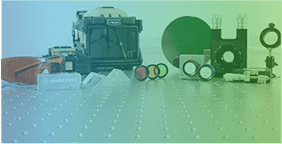Quality Control
Quality control is a process to monitor the quality of a production. It can be done offline, not on the production line itself by analyzing some samples of this production. It can also be online, directly done on the line itself and in this way a 100% quality control can be performed, ie on the whole production. Machine vision is a non-destructive technic to achieve some aspects of a quality control process.

Colorimetry
For the printing and scanning industries, it is essential to know the exact color of their products. There is little scope for them to capture the exact spectrum to build a database that can qualify products as compliant or non-compliant. Unlike standard cameras, hyperspectral pushbroom cameras have intense LED illumination, ensuring the necessary accuracy. This opens a wide range of potential applications, like predictive simulation systems to find out how a prototype reacts to ambient lighting, or like allowing a perfect color reproduction.
Sorting
The food research and industry build both its advances and its quality assurance on hyperspectral cameras, without which efficient detection of defects and impurities as well as characterization of product quality would be inconceivable today. This technology allows sorting machine builders and system integrators to obtain chemical information throughout the production process. Unlike traditional color, metal, or X-ray cameras, spectral cameras can reliably identify materials in the production flow based on biological and chemical content. This benefits not only the food industry, but also sectors such as textile and plastics production. Quality control is automated and so it’s increasing the quality of results and reducing waste.
Textile and fiber identification
To identify the type of textile, hyperspectral imaging provides a great precision with only a few data. The proper spectral range to sort textiles is between 1200 nm and 1700 nm, ie in the short-wave infrared. SWIR pushbroom cameras can be implemented on industrial lines of production to sort natural and chemical fibers (acryl, polyester, linen, cotton, wool, alpaca…). This technology could even be enlarged to leather identification and flaw detection.
Back to the Application Hyperspectral Imaging





